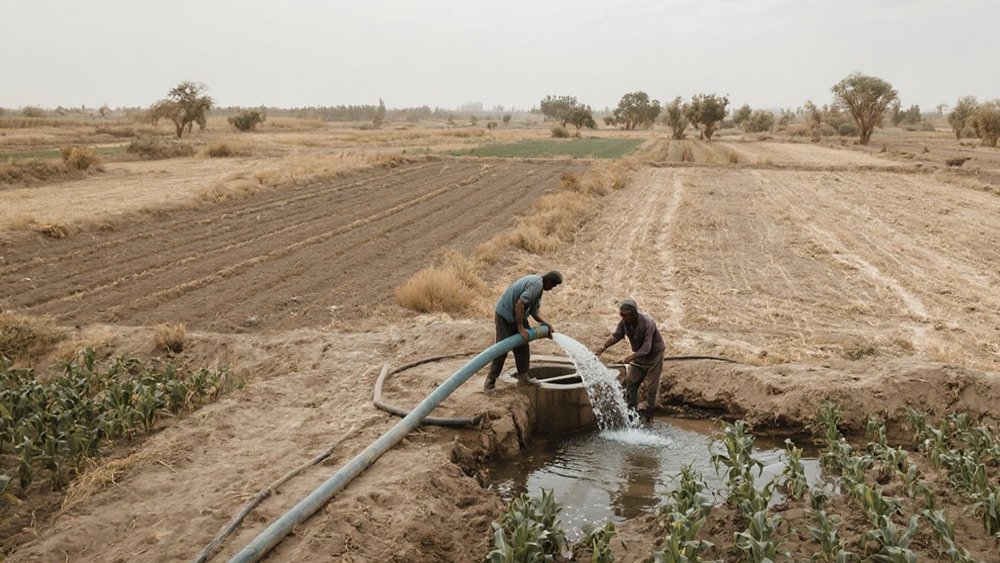+86 13816508465
Pump Knowledge
May. 24, 2025

Water scarcity is one of the greatest challenges facing agricultural regions in arid and semi-arid areas, such as the Middle East, North Africa, and parts of Latin America. These regions experience long dry seasons, erratic rainfall, and growing demand for food due to population growth. For farmers operating under these harsh conditions, access to reliable water management systems is critical for sustaining food production. This is where water pumps play a pivotal role.
Modern water pumps not only extract and distribute water efficiently but also transform drylands into thriving, productive farms. With innovative pumping technology, farmers in drought-prone regions can mitigate the challenges of water scarcity and continue to cultivate large-scale crops.
This blog explores the role of water pumps in agricultural water management and highlights the types of pumps and solutions that make successful farming in arid regions possible.
Key Water Pump Types for Arid Agriculture
Choosing the right type of water pump can make a critical difference in the success of large-scale agricultural projects in drylands. Below, we explore two of the most effective pump types and their applications.
Solar-Powered Deep Well Pumps
For remote farming operations in off-grid areas, solar water pumps for agriculture are a game-changing innovation. They harness solar energy to extract groundwater from deep aquifers, providing a sustainable and cost-effective irrigation solution.
Benefits of Solar-Powered Deep Well Pumps:
Renewable Energy: Solar pumps rely on clean, renewable power from the sun, minimizing carbon emissions.
Low Operating Costs: Once installed, these pumps have minimal ongoing expenses compared to diesel-powered alternatives.
Autonomous Operation: They can operate independently during sunlight hours without requiring constant human intervention.
Solar well pump systems are particularly effective in regions with abundant sunshine, making them ideal for farms in arid areas like North Africa.
High-Flow Centrifugal Pumps
High-flow centrifugal pumps are essential for distributing large volumes of water across agricultural fields. They are commonly used in flood irrigation, central pivot systems, and for transferring water over long distances, such as from a canal or reservoir to fields.
Advantages of High-Flow Centrifugal Pumps:
High Efficiency: These pumps handle high water flow rates with precision and speed.
Durability: Designed to operate under demanding agricultural conditions, these pumps can endure long hours of operation.
Adaptable Power Sources: Centrifugal pumps can run on diesel, grid electricity, or solar power, providing flexibility in energy options.
With their ability to handle large-scale farm irrigation needs, centrifugal pump systems are a staple for agricultural water management in dry regions.
Common Water Challenges in Arid Farming Regions
Farmers in arid and semi-arid regions often face unique water-related challenges that can complicate agricultural projects.
Intermittent Water Supply
Long dry seasons and unpredictable rainfall patterns lead to inconsistent water availability.
High Salinity or Hard Water
Groundwater from boreholes in these regions often contains high salinity levels, which can affect crop yields and corrode pumps.
Pump Corrosion and Clogging
Sand, debris, and hard water can cause blockages, overheating, and accelerated wear in pump components.
Power Source Limitations
Remote farming areas often lack grid electricity, leaving farmers dependent on expensive diesel or inconsistent solar power reserves.
Addressing these challenges requires innovative pump designs and supporting technologies to ensure reliability and efficiency.
Practical Pumping Solutions for Harsh Conditions
Innovative technologies allow water pumps to withstand the harsh conditions of arid regions. Here are some practical solutions for farmers operating in these environments.
Corrosion-Resistant Materials
Modern pumps built with stainless steel impellers and anti-corrosive coatings can handle hard or saline water without degrading over time.
Solar Pumps with Battery Backup
Solar water pump systems with battery storage enable nighttime and cloudy-day operations, ensuring a consistent water supply.
Pre-Filtration Systems
Installing pre-filters and sand separators extends pump life by preventing clogging caused by debris and sediment.
Smart Pump Controls
Remote monitoring systems optimize water usage by allowing farmers to track pump performance and control flow rates from anywhere.
These solutions not only improve pump durability but also safeguard the efficiency of agricultural water management strategies in drylands.
Basic Guidelines for Selecting a Pump for Arid Agriculture
Choosing the right pump for large-scale farm irrigation requires careful consideration of several factors. Below are some key guidelines to help farmers and agricultural planners make informed decisions.
Assess Water Source Depth and Flow Requirements
Determine the depth of the groundwater or the distance from the water source to ensure the pump can handle the required head pressure and flow rate.
Submersible vs. Surface Pumps
Submersible pumps work best for deep aquifers, while surface pumps are ideal for drawing water from shallow sources like rivers or reservoirs.
Energy Options
Consider the most reliable power source for your region. Solar pumps are excellent for sunny, off-grid areas, while diesel and electric-powered options may suit farms near infrastructure.
Capacity and Pressure
Match the pump's output capacity and pressure head with the specific needs of your irrigation system, whether for high-tech drip irrigation or traditional flood irrigation methods.
Maintenance and Parts Availability
Choose pump systems with local support, spare parts availability, and simple maintenance practices to minimize downtime.

Real-World Use Cases in Arid Agriculture
Solar Well Pumps for North Africa
A solar-powered deep well pump was installed to support a 100-hectare farm in North Africa. The system extracted groundwater from a depth of 150 meters and supplied it to high-efficiency drip irrigation lines. The renewable energy approach reduced operational costs by 60% compared to diesel alternatives.
Centrifugal Booster Pumps for Latin America
A series of high-flow centrifugal pumps was deployed along a canal-fed irrigation system in Latin America. These pumps distributed water across vast crop fields, enhancing yields by 30% during a particularly dry season.
These examples illustrate how the strategic use of pumping systems can drive agricultural success despite water scarcity.
The Key to Thriving Dryland Agriculture
Water pumps form the backbone of a reliable irrigation system, unlocking the potential of arid and semi-arid regions. From solar water pumps for agriculture to centrifugal pump systems for large-scale farm irrigation, choosing the right technology directly impacts crop yield, resource efficiency, and long-term profitability.
By investing in energy-efficient, durable, and high-capacity pumps, farmers can overcome water shortages and build drought-resistant irrigation systems. Early planning and careful pump selection will ensure sustainable agricultural growth for years to come.
For more solutions or assistance in designing your perfect pumping system, reach out to our experts today. Together, we can turn drylands into productive farmlands.
Address
No.17 XeDa Jimei Ind. Park, Xiqing Economic Development Area, Tianjin, China
Telephone
+86 13816508465
QUICK LINKS